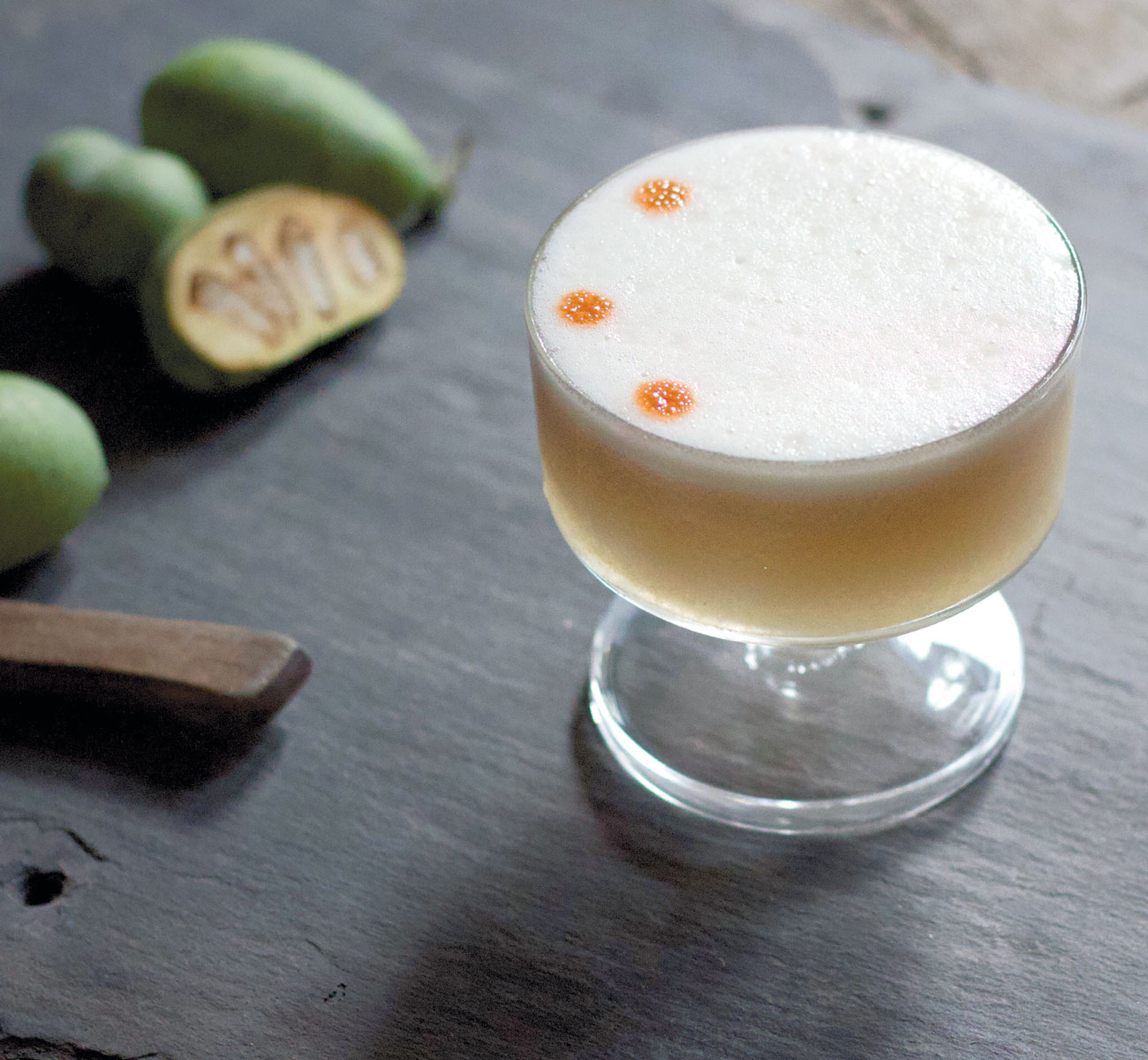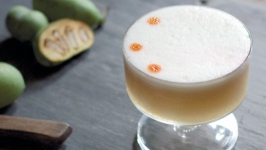Pisco Sour
The pawpaw is a fruit that grows wild in NJ. Its creamy yellow flesh, large black seeds and tropical flavor immediately took me back to the guanabana I ate in Peru.
Exactly eight years ago as I write this, I was in the middle of the Peruvian Amazon conducting ethnobotanical fieldwork with the Shipibo Indians. I was there to document their use of medicinal plants and to collect specimens to be tested for antimicrobial properties against a bacteria called E. faecalis, which can cause life-threatening infections in humans. This may seem like a straightforward objective, but our Western worldviews are entirely different from theirs. Where we attribute someone’s sickness to E. faecalis, the Shipibo may deem that it was from a bad spirit sent by a malevolent witch or shaman.
In either case, if someone is sick, he needs medicine, and for the Shipibo that means turning to nature. The Shipibo’s knowledge of the edible, medicinal and utilitarian properties of each plant in their environment is astounding. Walking through the forest with the medicinal plant experts from each village was like walking through a pharmacy with a pharmacist. In what seemed like a sea of green to my untrained eye, they discerned flora they would process for therapeutic purposes for illnesses as different as the common cold and HIV.
Each family also tended a plot behind their house where they grew food and medicine. A common staple in many gardens was the guanabana tree (soursop in English). Suimara, a village matriarch, told me she used the leaves to make a tea for a family member with hepatitis, and that the tea could also be drunk to help cleanse the kidneys. Suimara took a bamboo pole and knocked down a guanabana fruit for me to try. The fruit looked alien. It was almost a foot long and covered in green spikes, but when she cut it open for us to eat, it was incredible. We used our hands to scoop out the white flesh and then sat quietly, spitting the large black seeds into the grass. The flavor was like a mix of banana and mango with a tropical taste that I thought could be found only in a place as exotic as the Amazon.
That misconception was turned upside down for me five years later when I tried pawpaw, a fruit that grows wild in New Jersey. As I took my first bites, the creamy yellow flesh, large black seeds and tropical flavor immediately took me back to the guanabana I ate in Peru. As it turns out, guanabana and pawpaw are cousins in the Annonaceae family of flowering trees. At about the size of a mango, pawpaws are North America’s largest native fruit, and at one time they were an important food in the entire area east of the Mississippi. Historically, the trees went by many other names, including Indian Banana, Quaker Delight and Hillbilly Mango, which refer to the fruit’s role as a staple in many different cultures of the region. At some point, this native fruit was forgotten. If you have no idea what pawpaws look or taste like, you’re in good company. Lucky for us, people like Neal Peterson (dubbed the “Pawpaw Johnny Appleseed”) have been working to help reintroduce this food back into the American diet. September is the perfect time to discover the fruit. You can find it either growing wild or at your local farmers’ market. Rose Robson, from Robson’s Farm in Wrightstown, has more than 100 trees planted that she’s hoping will begin to fruit this year.
Pawpaws spoil quickly, so I like to preserve them as a shrub, combining the separated pulp, apple cider vinegar and sugar. Shrubs, with their sweet-and-sour profile, make great additions to cocktails. I am using it here in a Pisco Sour, which is the national drink of Peru, as a tribute to Suimara and the family of fruit she introduced me to in her backyard garden years ago. Salud.






